-
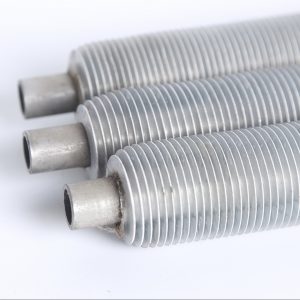
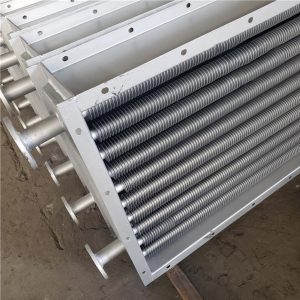 Read MoreQuick View
Read MoreQuick ViewAluminium Fin Tube
The aluminum fin material completely encloses the tube, except at the ends where a tube coating can be applied. Where atmospheric corrosion is present and when operated within design temperature limits, extruded finned tubes provide the most stable performance over time as compared to the other fin types. The fin is rolled from an outer aluminum tube by a process using pressure to create a rolled “pressure bond” between the liner tube and fins.
-
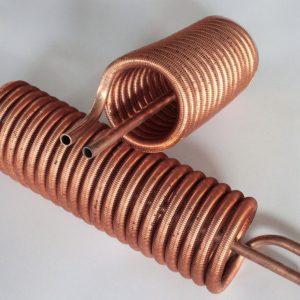
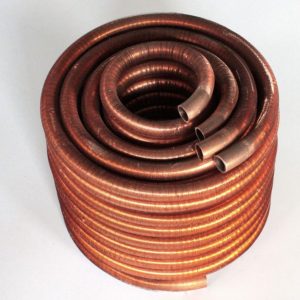 Read MoreQuick View
Read MoreQuick ViewCoiled Copper Fin Tube
Copper fin coils are also special coils that Grand provide. These coils don’t have a bi-metallic bond usually found on standard coils and have a copper wavy fin pattern bonded to the copper tubes.
These coils are very reliable heat exchangers as they are required and can operate for air conditioners in harsh coastal areas and other highly corrosive surroundings because the coils have higher coastal corrosion durability. The coils match this type of environment because the bi-metallic construction is not present, and copper has a natural protective film and a mono-metal bond attaching the tube and fin. They have superb thermal conductivity, resistance and strength compared to aluminium.
-
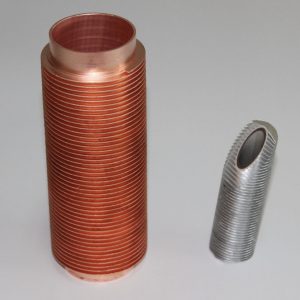
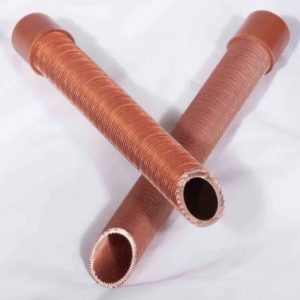 Read MoreQuick View
Read MoreQuick ViewCopper Fin Tube
Copper is a metal element, and pure copper is a soft metal. The surface is reddish orange with metallic luster when it is just cut open, and its simple substance is purple-red. Good ductility, high thermal conductivity and electrical conductivity, so it is the most commonly used material in cables and electrical and electronic components.
It can also be used as a building material and can be composed of many alloys. Copper alloys have excellent mechanical properties and low electrical resistivity. The most important ones are bronze and brass. In addition, copper is also a durable metal that can be recycled multiple times without compromising its mechanical properties.
Copper pipes (also known as red copper pipes) are commonly used in tap water pipes, heating and cooling pipes, and can be used in different environments. Copper pipes combine the advantages of metal and non-metal pipes in cold and hot water systems. Copper pipes are resistant to high temperatures and can be used in a variety of environments. Compared with this, the shortcomings of many other pipe materials are obvious.
-
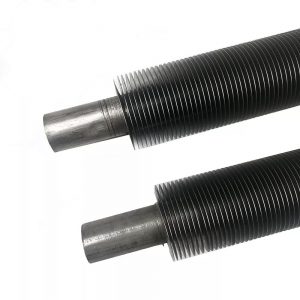
 Read MoreQuick View
Read MoreQuick ViewExtruded Fin Tube
Extruded fin tube is rolled as an integrity with no thermal contact resistance, high intensity, featured in thermal shock and mechanical shock resistance. Heat exchangers assembled with this kind of fin tube (extruded fin type) is much better than the one equipped with string fin tubes or hectically wound fin tubes (L/LL/KL type fin).
Extruded Finned Tubes, also known as “Integral Finned Tubes”. Integral finned tubes are manufactured by rolling process on tubes. During finning operation, the inside diameter of the tubes is reduced and helical fins are rolled on the tube wall. The tubes material can be Copper Alloy, Brass Alloys, Copper Nickel Alloy, Titanium Alloy, Stainless Steel, Duplex Stainless Steel etc. The pressure required to extrude fins from the aluminum sleeve creates an excellent “pressure bond” between the two materials.
Copper and aluminum com-posited fin tubes are rolled from a muff copper tube, advantaged in tight link, small thermal resistance, good heat transfer efficiency, small flow loss and strong corrosion resistance. When working in long time under heating and cooling conditions, they are durable and not easy to deform.
The integral extruded fin tubes is smooth on surface and easy to clean. When wet cooling in heating and air conditioning project, it is easy to remove the condensation water on the outer surface of the fin, and it is not easy to dust and scale in the heating and other heat exchange.
-
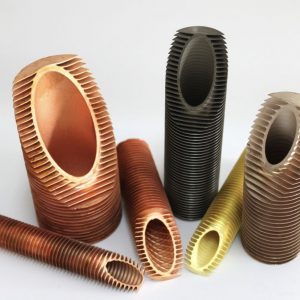
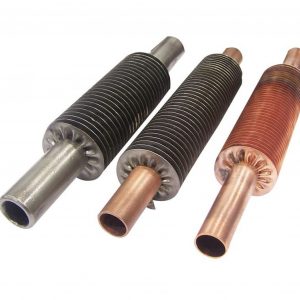 Read MoreQuick View
Read MoreQuick ViewExtruded Copper Fin Tube
Copper is a metal element, and pure copper is a soft metal. The surface is reddish orange with metallic luster when it is just cut open, and its simple substance is purple-red. Good ductility, high thermal conductivity and electrical conductivity, so it is the most commonly used material in cables and electrical and electronic components.
It can also be used as a building material and can be composed of many alloys. Copper alloys have excellent mechanical properties and low electrical resistivity. The most important ones are bronze and brass. In addition, copper is also a durable metal that can be recycled multiple times without compromising its mechanical properties.
-
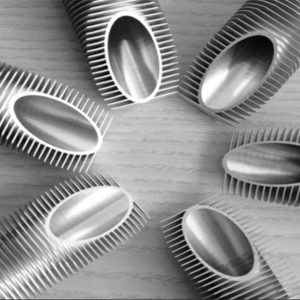
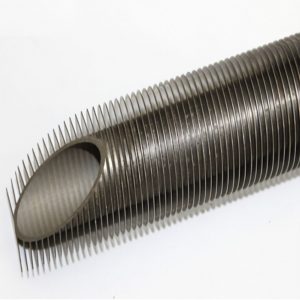 Read MoreQuick View
Read MoreQuick ViewTitanium Fin Tube
Seamless and welded titanium tubes are widely used in a variety of heat exchanger applications worldwide. These applications cover many industries such as steam turbine power plant, refineries, chemical plants, air conditioning systems, multi-stage flash distillation, desalination and vapor compression plants, offshore platforms, surface ships and submarines, as well as swimming pool heating systems.
-
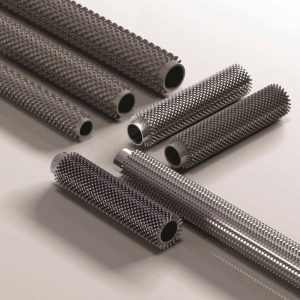
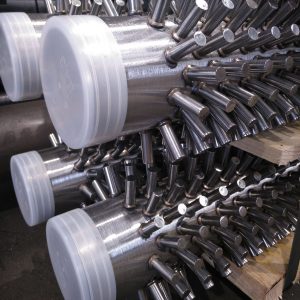 Read MoreQuick View
Read MoreQuick ViewStud Fin Tube
The STUDDED Fin Tube is manufactured by Resistance Welding of Studs on the Bare tubes.
The fins are manufactured by welding of the Fin Material which is essential a stud or rod welded at base to the tube by Electrical Resistance Process.
The current is made to flow through the Tube and the base of the studs. The studs are specifically made in shapes to facilitate the welding process. The Stud; during the finning “welding” process is also mechanically pressed on the tube at the point of welding thence causing a very good mechanical bond. This type of Fin Tube find very good application in high pressure and high temperature applications. The mechanical bond is very strong and hence finds application in places where extreme mechanical load, stress is expected while during the process or cleaning etc.
These Fin Tubes find application in Finned Pipes, Air Coolers, Heat Exchangers etc and are preferred in Industries like Petrochemical Refineries, Power Plants, Chemical Industries, Steel Plants, etc.
-
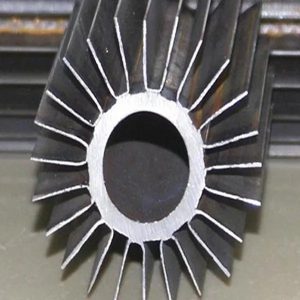
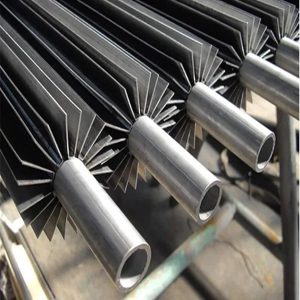 Read MoreQuick View
Read MoreQuick ViewLongitudinal Finned Tubes
Longitudinal finned tubes are produced by welding the fins with resistance along the length of the tube. The fins first form a u-shaped channel, allowing each of the u-shaped legs to form a fin. The channel is cut to the appropriate length and then welded into place along the length of the tube and resistance. The channels are a pair of welded, polar opposites, so the number of fins specified must be a multiple of four.
For a given tube or tube size, the desired heat transfer surface area per tube unit length can be obtained by specifying the appropriate fin height and number of fins. The maximum number of fins depends on the outer diameter of the tube – the larger OD tube can accommodate more fins.
-
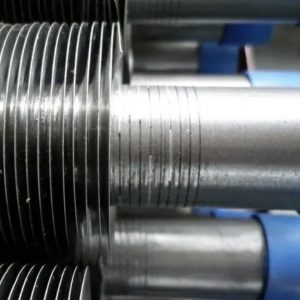
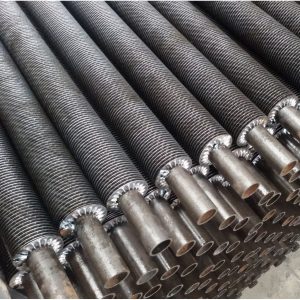 Read MoreQuick View
Read MoreQuick ViewLaser Fin Tube
Laser welding finned tube is a new, wear-resistant and efficient heat exchange material in the fin tube welding industry. It is a high-efficiency and energy-saving heat exchange element with high heat exchange efficiency, large heat dissipation area, long service life and temperature adaptation It has a wide range, high pressure, and conforms to the national energy conservation and environmental protection emission standards. It is widely used in waste heat recovery, petrochemical industry, power station boilers, economizers, passenger cars, industrial and civil building heating, refrigeration systems and other industries.
The laser welding fin tube is a fin tube laser welding machine that integrates laser technology, hardware molds, and numerical control automatic control. It is simple to operate and flexible and convenient to manufacture. Overcoming a series of problems in the welding process of laser welding finned tubes, such as fracture, slow speed, poor forming, and wrinkling. Datang has now successfully mastered the welding of finned tubes such as laser welding finned tubes and heat exchangers. The production and coordination of all parameters and automatic fixtures.
-

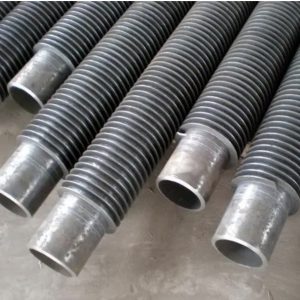 Read MoreQuick View
Read MoreQuick ViewSeamless Fin Tube
A fin tube is a tube that has small fins around the outside surface.
These fins act as a filter and a mechanism to transfer heat from the material inside the tube to the outside space or vice versa. Fin tubes are used in applications that require a transfer of heat from a hot fluid to a colder fluid through the tube’s wall.
Grand provide a wide range of fin tubes(carbon, stainless,copper,aluminium,titanium,etc;) are used in heat exchangers (air, water and chemically cooled)for various industries such as petroleum, petrochemical, steel, power generation and many more.
-
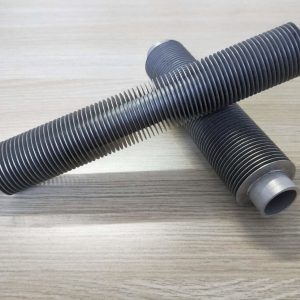
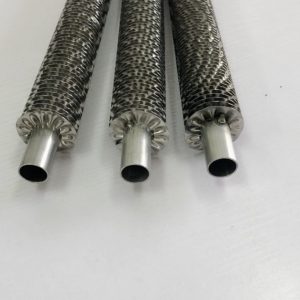 Read MoreQuick View
Read MoreQuick ViewStainless Fin Tube
Stainless steel fin tubes are processed out of various grades of both seamless and welded plain tubes. Plain stainless steel tubes will be procured from well known indian plain tube manufacturers, as per material specification and customer requirement, for processing fin tubes. Plain stainless steel tubes will be procured for finning, duly hydro tested and eddy current tested as per material specification and code, from plain tube manufacturers only, as per customer requirement. If customer require, we will procure plain stainless steel tubes, duly inspected, approved and released by customer or third party inspection agency, at plain tubes manufacturer’s end.
-
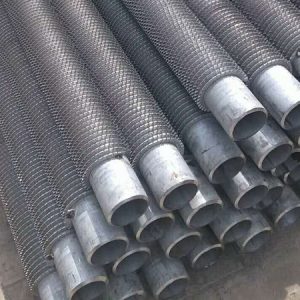
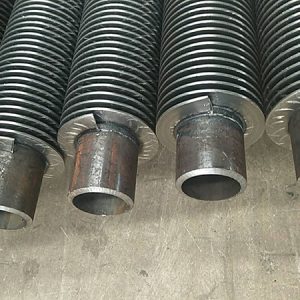 Read MoreQuick View
Read MoreQuick ViewHigh Frequency Welded(HFW) Fin Tube
High frequency welded finned tube is a type of finned tube, which is mainly welded by high frequency welding and is a new type of excellent heat dissipation element. The high frequency welding finned tube is welded with high frequency current, the welding method is reliable and excellent, the welding seam is small, and the surface of the radiator is more solid as well as beautiful.
High frequency welded finned tube is a heat sink element often used in finned tube radiators. Welding high-frequency welded finned tube on the base tube of the radiator improves the heat transfer coefficient of the heat exchanger side of the radiator and enhances the heat dissipation effect of the radiator, and the excellent heat dissipation effect makes the finned tube more and more popular.
The high frequency welding finned tube is welded with high frequency current, which can increase the compactness of the radiator and improve the safety of the high frequency welding finned tube radiator in the operation process. The high-frequency welding process is an improved and upgraded process on the basic welding process, which is also a more excellent welding process.
-
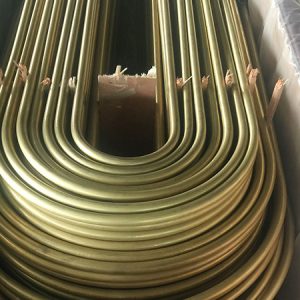
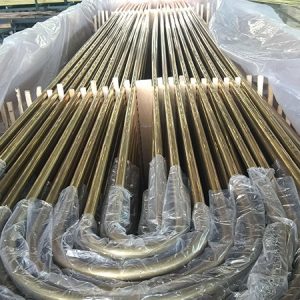 Read MoreQuick View
Read MoreQuick ViewCopper Alloy U Bend Tube
Copper and Cu alloy U bending tube is carried out by cold working method and is being done to the necessary bend radius as per client drawings. U-bend tube/pipe can be manufactured from an extensive range of pipe materials that contain high and low yield stainless steels, alloy steels, carbon steels,Monel , Inconel, hastelloy,duplex , super duplex,titanium,copper alloy and Cr-Ni alloys. Usually U-bends manufactured from seamless tube, can further be customized in terms of thicknesses and sizes as per the specific requirements of our clients. They are easy for further assemble tube bundles.
Grand provides U bend Tubes pipe in diverse industries for a range of applications such as in Boiler, Condensers, Evaporators,tube bundles for Heat Exchangers, Coolers/Inter-coolers, Chiller, and so on. These are as well being used in dissimilar industries such as in Fertilizer Plants, Sugar Industry, Steel Plants,Oil & Gas plants, Chemical & Petrochemical plants, Refineries, Power plants, Renewable energy plants etc.
-
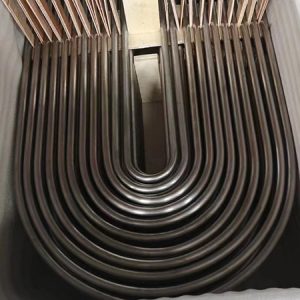
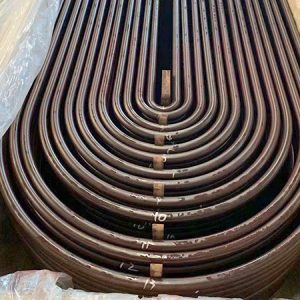 Read MoreQuick View
Read MoreQuick ViewLow Alloy U Bend Tube
U bending tube is carried out by cold working method and is being done to the necessary bend radius as per client drawings. U-bend tube/pipe can be manufactured from an extensive range of pipe materials that contain high and low yield stainless steels, alloy steels, carbon steels,Monel , Inconel, hastelloy,duplex , super duplex,titanium,copper alloy and Cr-Ni alloys. Usually U-bends manufactured from seamless tube, can further be customized in terms of thicknesses and sizes as per the specific requirements of our clients. They are easy for further assemble tube bundles.
Grand provides U bend Tubes pipe in diverse industries for a range of applications such as in Boiler, Condensers, Super Heaters,tube bundles for Heat Exchangers, Coolers/Inter-coolers, Chiller, and so on. These are as well being used in dissimilar industries such as in Fertilizer Plants, Sugar Industry, Steel Plants,Oil & Gas plants, Chemical & Petrochemical plants, Refineries, Power plants, Renewable energy plants etc.
-
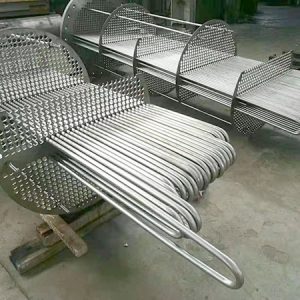
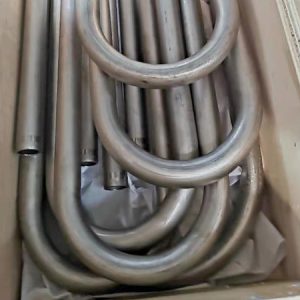 Read MoreQuick View
Read MoreQuick ViewTitanium U Bend tube
Titanium U Bend tube is carried out by cold working method and is being done to the necessary bend radius as per client drawings. U-bend tube/pipe can be manufactured from an extensive range of pipe materials that contain high and low yield stainless steels, alloy steels, carbon steels,Monel , Inconel, hastelloy,duplex , super duplex,titanium,copper alloy and Cr-Ni alloys. Usually U-bends manufactured from seamless tube, can further be customized in terms of thicknesses and sizes as per the specific requirements of our clients. They are easy for further assemble tube bundles.
-
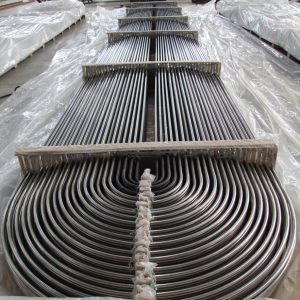
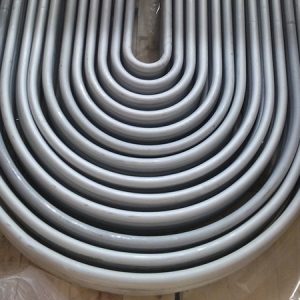 Read MoreQuick View
Read MoreQuick ViewStainless Steel U Bend Tube
U-shaped or U-bent tubes give the end user more freedom to design a more compact system than straight tubes do. The stainless steel U bend tube is perfect for applications involving heat and elevated pressure levels since it is frequently used in heat exchanger applications. An expansion joint would be used to join a straight tube in settings with exceptionally high temperatures. It would be terrible for the application if straight tubes’ thermal expansion was not taken into account.
Not to add, the price of the application is increased by the cost of using an expansion joint. However, when connecting a tube and a shell, a Stainless Steel U Bend Tube For Heat Exchanger allows for thermal expansion of the component without adding on or increasing the cost. As a result, employing stainless steel U-shaped tubes is not only effective but also economical. Although the component’s design is critical for its intended use, choosing the right grade when producing the stainless steel U-shaped tube is also a crucial factor. Stainless steel comes in a variety of grades on the market today.
Any grade of stainless steel tube U bend has an almost endless range of applications, from the highly affordable grade alloy 304 to the marine grade alloy 316. The Ss 316ti U Bend Tubes, which contain titanium added to its chemical composition, is one of the most attractive alloys since the durability of the application also comes into view. In particular, the alloy creates titanium carbide rather than carbide precipitates, which is not lethal to welded components, which improves the high temperature performance of the stainless steel welded U tube.
+86-139-158-49649
|
sales@grandsteeltube.com
© Copyright 2009 Precision Tubes,Hydraulic Tubes,Copper Tubes,Caplliary Steel Tubes,Stainless Tubes,Titanium Tubes,Aluminium Tubes,Brass Tubes,Bundy Steel Tubes. All Rights Reserved.
